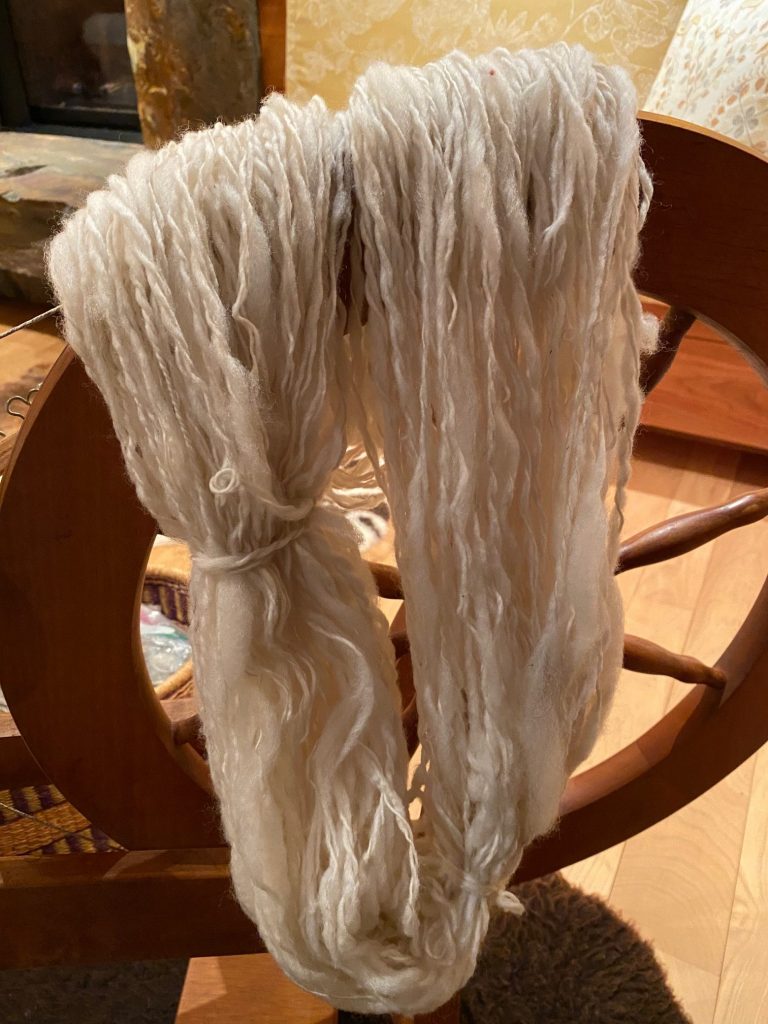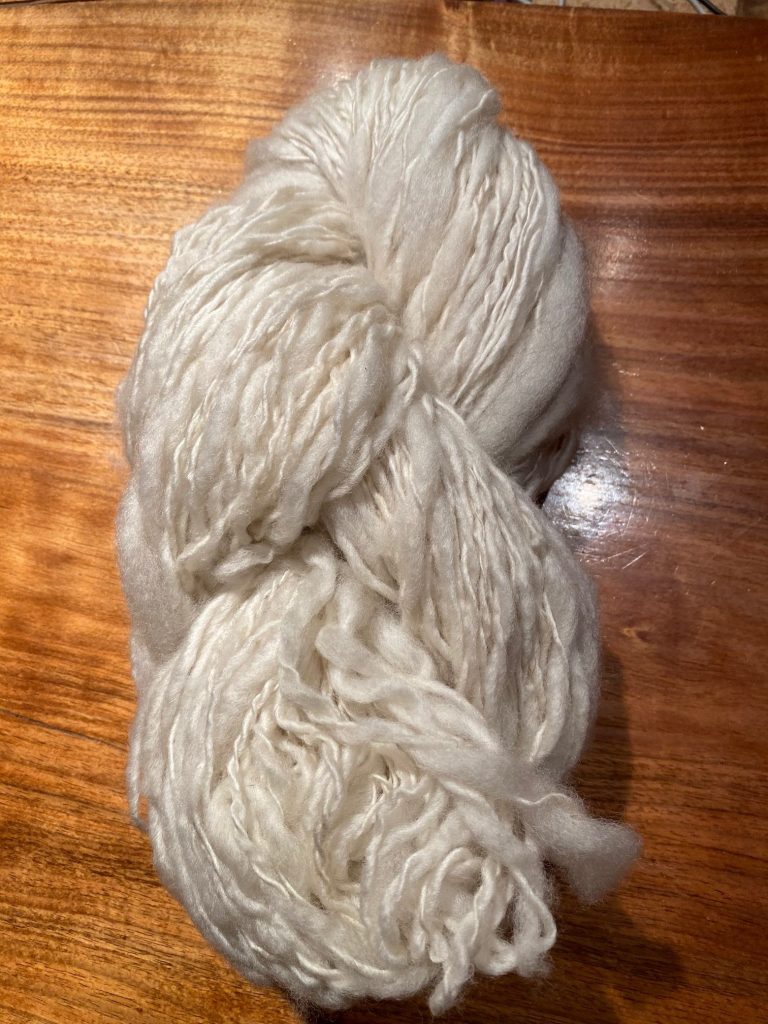
Dale is my beautiful white Corriedale ram, and he has an amazing fleece. It is fine and soft, with a fiber diameter of 29 microns, lovely crimp and a long staple length. Dale wore a coat and didn’t eat alfalfa, so his fleece, even the bits at the neck that weren’t covered by the coat, are very free of vegetable matter, the dreaded “VM,” little bits of sticks and leaves that is the bane of hand-spinners. I want to sell Dale’s fleece (click here to see its listing in my shop), but part of the processing of a fleece is to “skirt” it, pulling off the edges that are more matted and dirty with poopy bits.
I skirted Dale’s fleece and had all these beautiful locks. They were dirty, but not contaminated with VM, and I wanted to see what I could make from them.
The first batch that I washed did have more VM in them than I realized, but I persevered, picked it out and carded and spun the wool. It spun really nicely, so I decided to wash a second batch and spin some more. Here is the process, step-by-step.
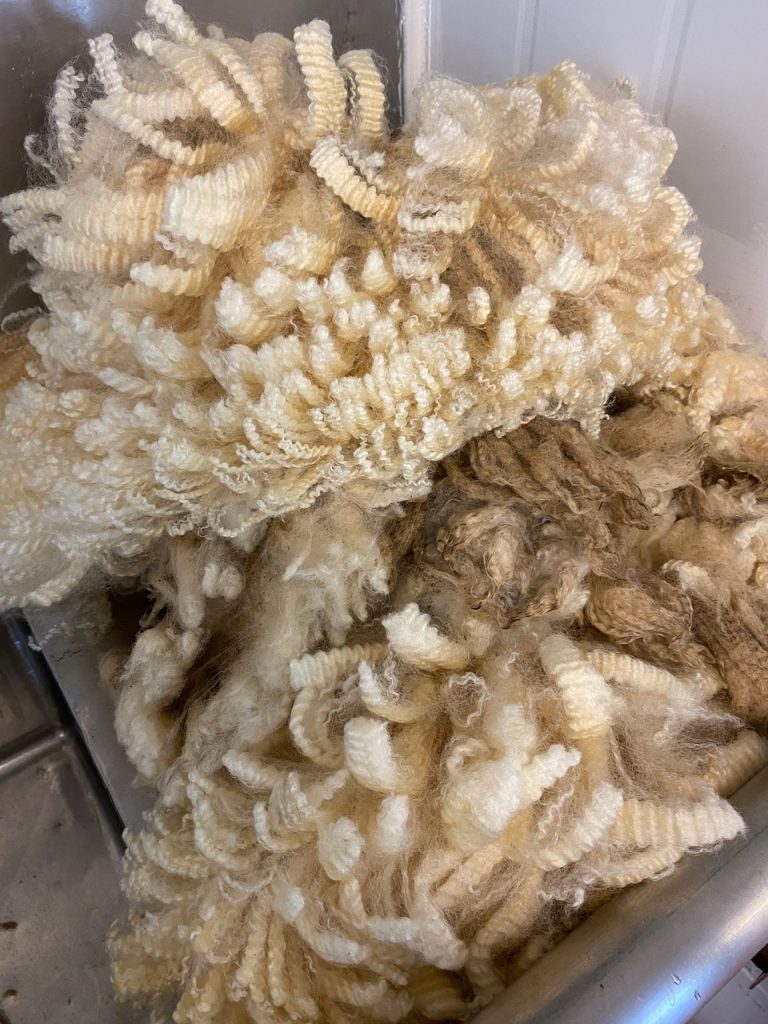
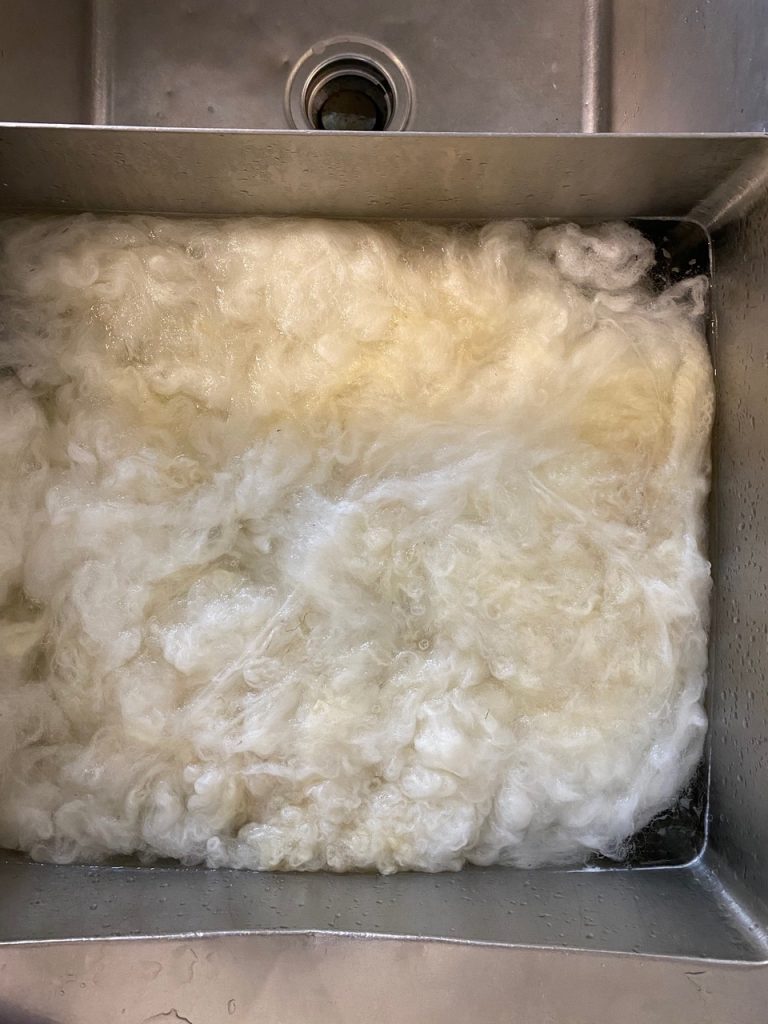

After the wool was dry I put it in a bag and took it home to card and spin.
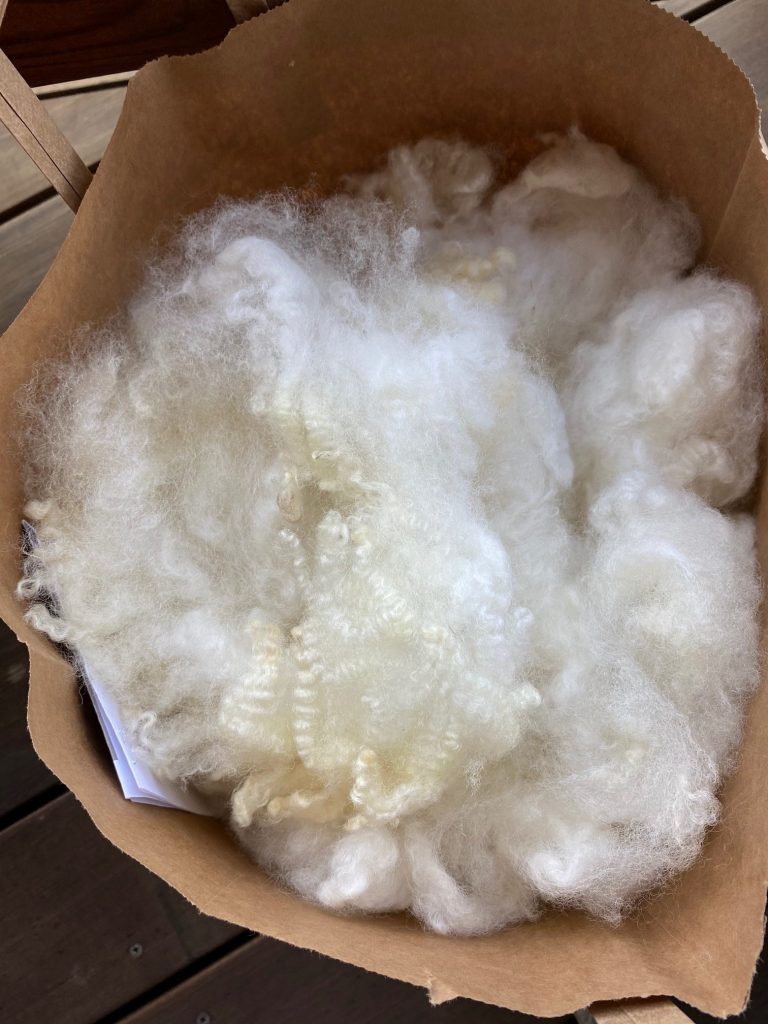

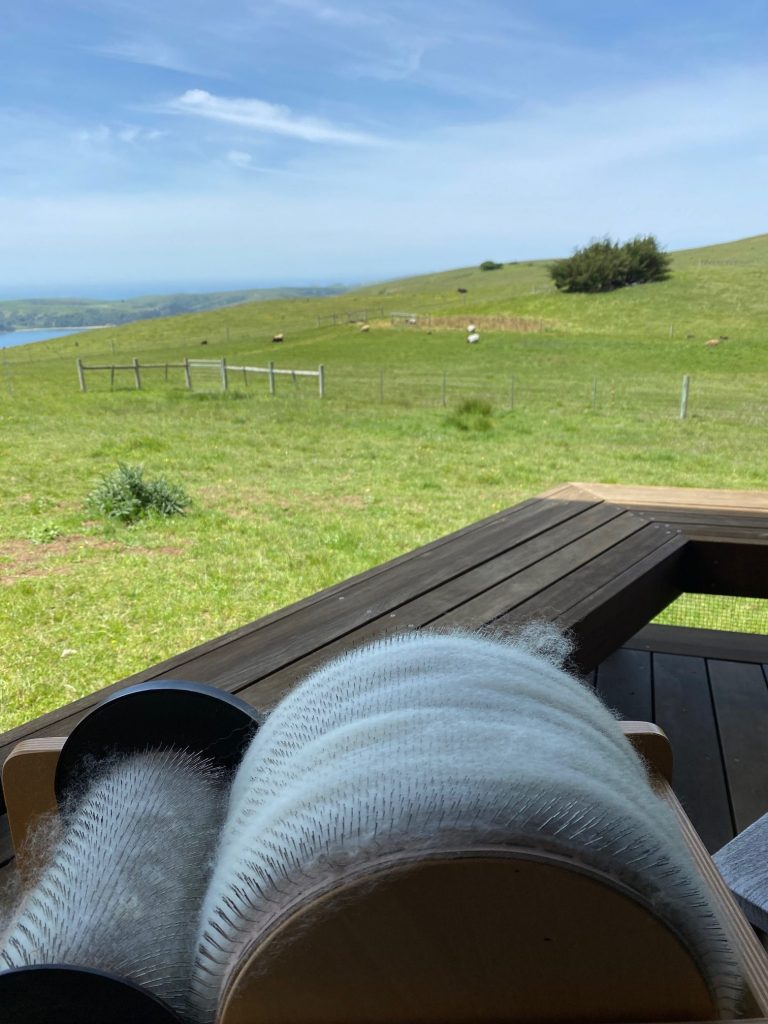
Carding is my least-favorite part of the process, but it is essential. The carder combs the wool so that all the fibers are going in the same direction, ready to spin. The product is something called roving. Carding also creates a mess–little bits of wool-fluff and some dust and dirt that shakes out of the wool. So I usually card in my mud room. But today was a beautiful day, so I set up to card Dale’s wool on my deck, looking out a the “lamb-park” pasture which was full of ewes and their lambs. I got a lot done and really enjoyed it!


Now I have three big chunks of roving, enough to keep me spinning for several evenings. To finish out the process, here are some photos from my first run with Dale’s skirtings.

